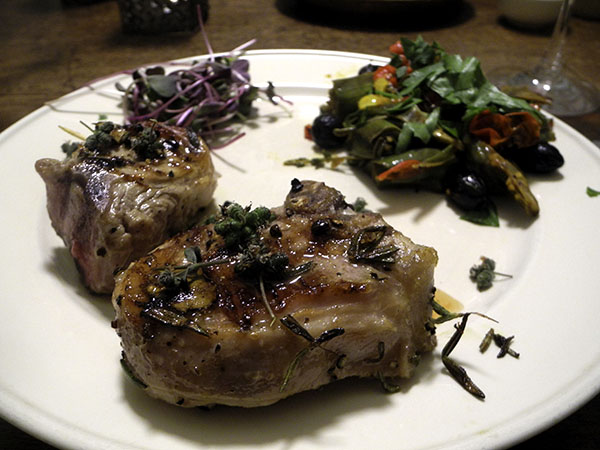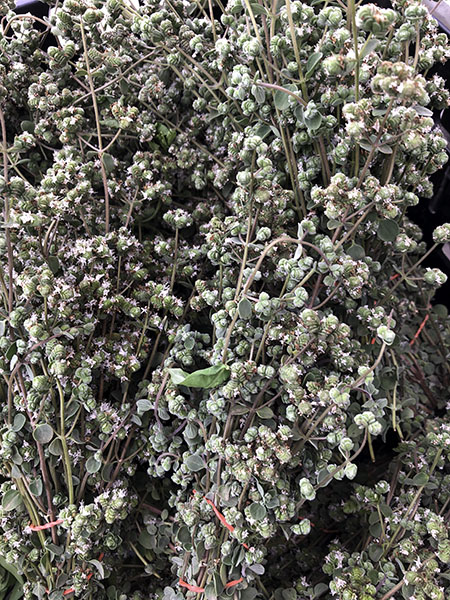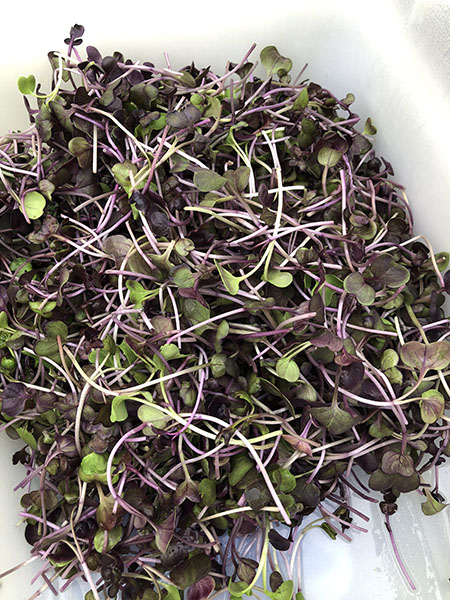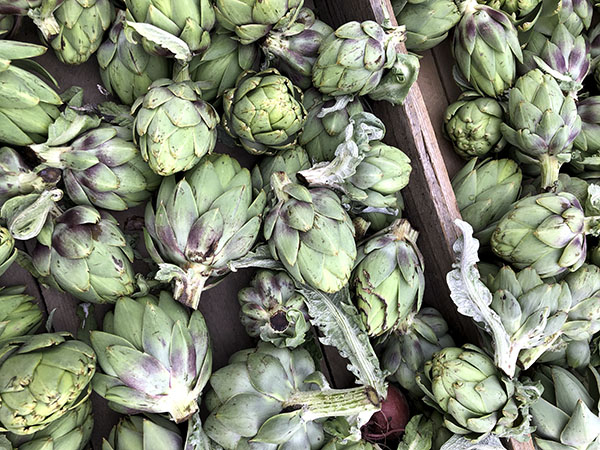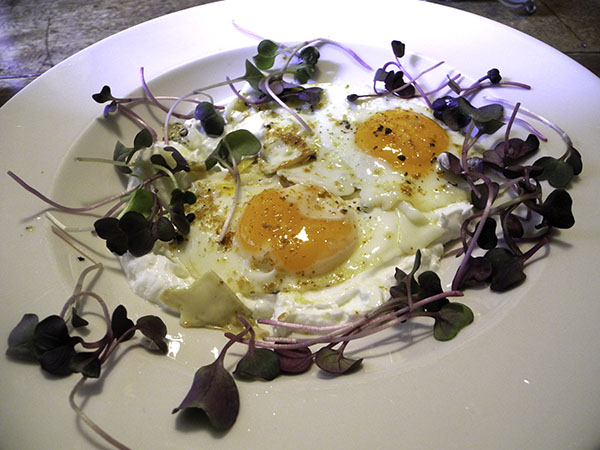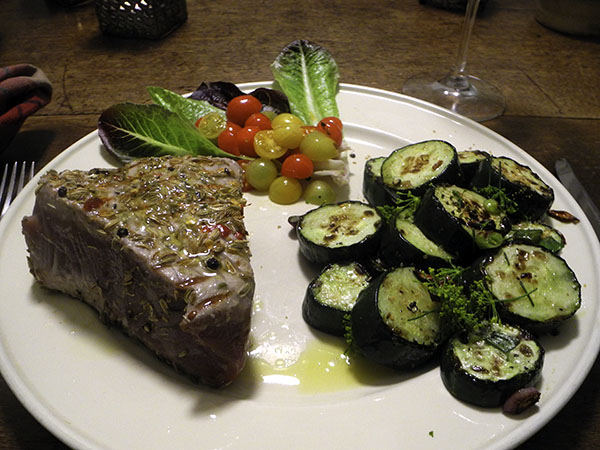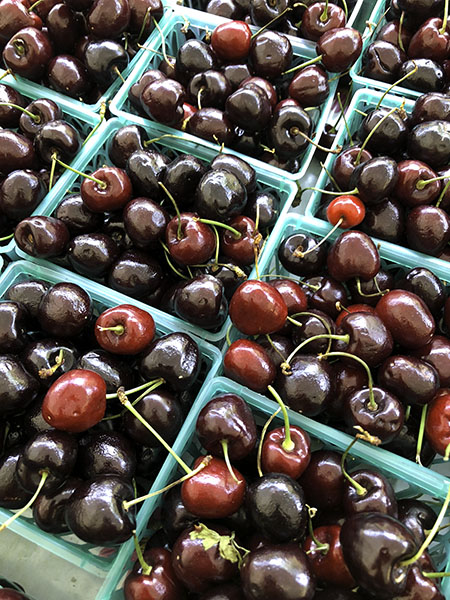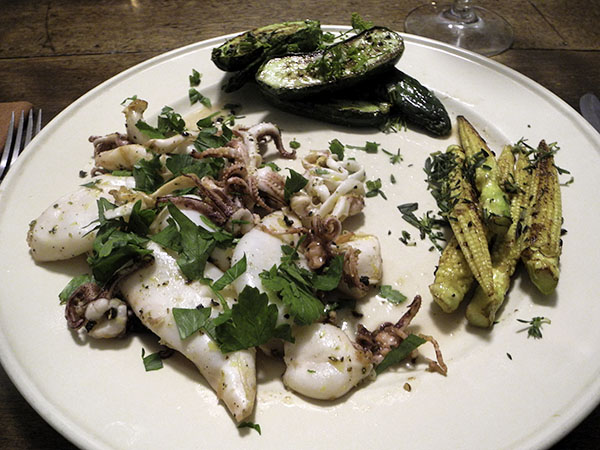
They really were all ‘baby’ things, as I tweeted last night, baby squid, baby corn, and baby cucumbers (even if only the corn had been labelled as such), and all of them came from the Union Square Greenmarket. It certainly wasn’t something I had been after; it just happened, but fortunately, as I added then, it was all good, very good.
The corn was the only real surprise, since, before I shucked the little ones, the cobs had looked like they would be somewhat larger. Had I known the size while still at the stand, I would probably have bought more, but the plate proportions did end up just about right.
- a full pound of cleaned baby squid, bodies and tentacles, from P.E. & D.D. Seafood, marinated for about 45 minutes (the first 25 or so in the refrigerator) inside a bowl containing a mixture of the zest and juice of most of one Whole Foods Market lemon, one clove of fresh minced fresh garlic head from Alex’s Tomato Farm, almost 2 tablespoons of Whole Foods Market house Portuguese olive oil, a third of a teaspoon of super-pungent dried Sicilian oregano from Buon Italia, sea salt, and freshly-ground black pepper, removed from the marinade, drained, pan-grilled briefly (virtually a matter of seconds, for the smaller pieces) on top of a seasoned cast iron double grill pan that had been allowed to get very hot on top of 2 burners and high flames, arranged on 2 plates, sprinkled with a bit of juice from the same lemon used in the marinade, scattered with chopped parsley from Keith’s Farm, finished with a drizzle of olive oil
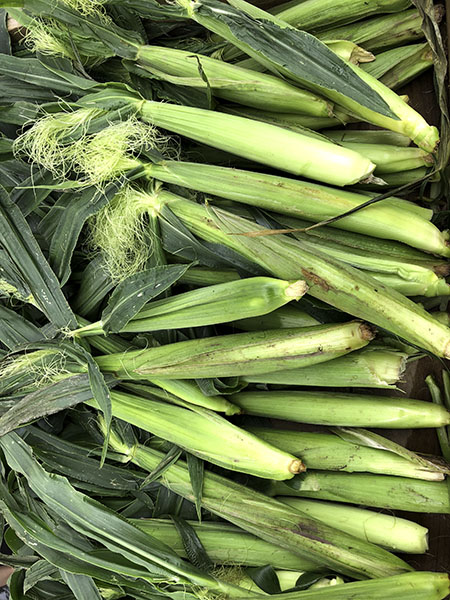
- ten ears of baby bicolor corn from Alewife Farm, shucked, sautéed inside a heavy medium antique copper pot, in which a little butter and a little less olive oil had been heated until fairly hot, sprinkled with Maldon salt, black pepper, and a bit of crushed dried habanada pepper, finished with fresh summer savory from Alewife Farm
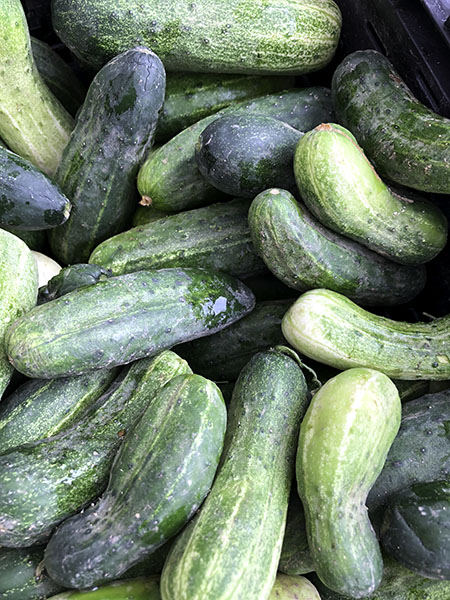
- five or six ‘Excelsior’ cucumbers (rather baby size) from Norwich Meadows Farm, sliced lengthwise, sautéed in a little olive oil inside an oval antique copper pan until they had begun to caramelize, and, shortly before that moment, joined by slices of flowering spring shallot stems from Keith’s Farm, turned over, stirred around a bit, seasoned with sea salt and black pepper, sprinkled with cut dill flower, also from Alewife Farm, arranged on the plates and sprinkled with more dill
